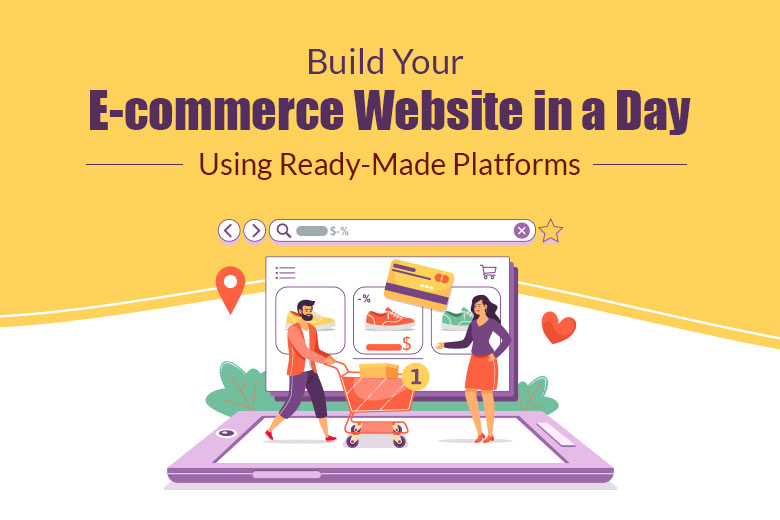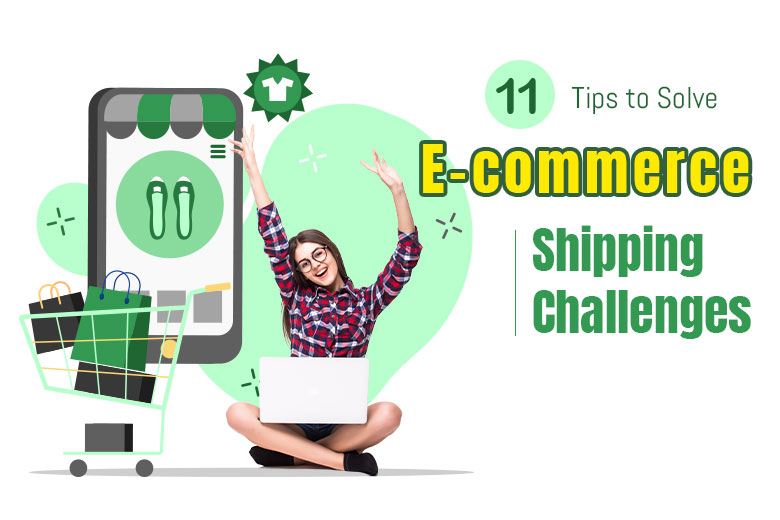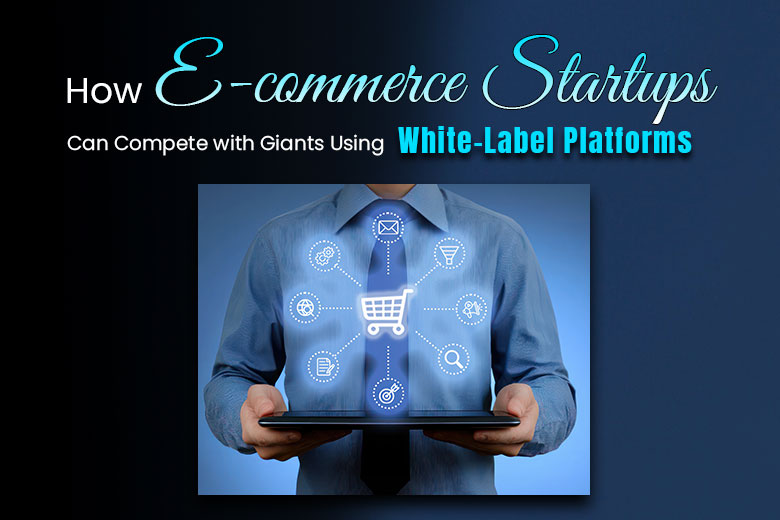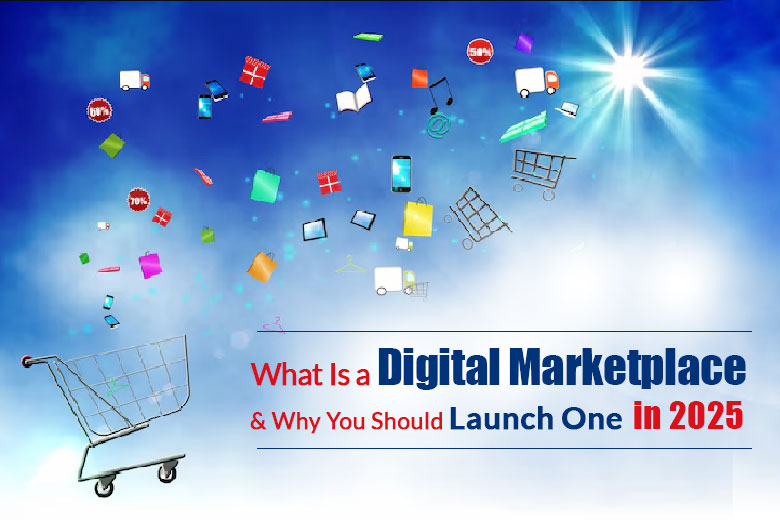Build Your E-commerce Website in a Day: Using Ready-Made Platforms
- July 11, 2025

If you’re an e-commerce entrepreneur or small business owner, launching your online store quickly is crucial to staying competitive. Fortunately, you no longer need months of development or a big budget to start selling online. Today, you can build an e-commerce website in less than 24 hours using modern, ready-made solutions—no technical background required.
The rise of user-friendly website builders and ready-made e-commerce platforms has made it easier than ever for small business owners to get online. These platforms offer everything you need—from design templates and payment integrations to product listings and SEO tools—all pre-configured and ready to go.
This step-by-step guide will walk you through how to build a readymade e-commerce platform or online store in just one day. Whether you’re launching a new product line, starting a side hustle, or digitizing an existing retail business, this is your blueprint to get started—fast, efficiently, and affordably.
Let’s explore how to turn your business idea into a live, revenue-generating online store—today.
Step 1: Define Your Business Model and Product Line
Before you build your e-commerce website, you need clarity on your business model:
- Are you selling physical or digital products?
- Are you running a single-brand store or a multi-vendor marketplace?
Make a list of your initial product offerings and focus on a small, curated collection—ideally 5 to 10 products. This keeps the process manageable and allows you to launch quickly.
Step 2: Choose a Ready-Made E-commerce Platform
To build a ready-made e-commerce platform, choose a solution that offers pre-designed templates, drag-and-drop functionality, and integrated tools for payments, inventory, and customer management.
Top features to look for:
- Responsive design templates
- Secure payment gateways (Stripe, Razorpay, PayPal)
- Product management tools
- Shipping and tax settings
- SEO-friendly architecture
- Integration with marketing tools like email, WhatsApp, or Google Analytics
Recommended platforms:
- Shopify – Great for beginners and global scalability
- Wix eCommerce – Ideal for creative flexibility
- WooCommerce – Perfect for WordPress users
- White-label platforms – Best choice if you want to build a readymade e-commerce platform that aligns with your brand identity quickly
By choosing a platform with built-in features, you save development time and cost while ensuring your store is ready for customers from day one.
Step 3: Get a Custom Domain Name
Your domain name reflects your brand’s identity and enhances credibility. Most e-commerce platforms let you purchase and set up a domain during onboarding.
Domain tips:
- Keep it short, brandable, and easy to spell
- Choose a .com or local extension like .in
- Include a keyword or product reference if possible (e.g., OrganicGlowSkincare.com)
Step 4: Select and Customize a Theme
A clean, mobile-optimized theme ensures a smooth customer experience. Start with a pre-built template that suits your industry and customize it with your logo, brand colors, and banners.
Focus on:
- Product-focused homepage layouts
- Easy-to-use navigation
- Visible CTAs like “Shop Now” or “Add to Cart”
- Fast loading speed across devices
Themes save valuable hours, making it possible to build an e-commerce website that looks professional in a single afternoon.
Step 5: Add Products and Write Optimized Descriptions
Start uploading your products with clear images, pricing, and detailed descriptions.
Product listing checklist:
- Product title with keywords
- High-resolution images (multiple angles)
- Short, benefit-driven descriptions
- Pricing and stock status
- Delivery timelines and return policy
Step 6: Configure Payment, Shipping, and Taxes
Your store must support seamless payments and order processing. Modern platforms simplify these processes with pre-integrated options.
Payment setup:
- Integrate gateways like Stripe, Razorpay, or PayPal
- Enable Cash on Delivery (COD) if targeting local buyers
Shipping setup:
- Define zones and shipping charges
- Offer free shipping for orders above a certain value
- Integrate with logistics partners like Shiprocket or Delhivery
Set tax rules based on your region (e.g., GST in India) and test the checkout process before going live.
Step 7: Create Important Website Pages
To ensure professionalism and legal compliance, build the following pages:
- Homepage – Showcase bestsellers and brand message
- About Us – Share your brand story and vision
- Contact Page – Include phone, email, and contact form
- FAQ – Answer common queries
- Privacy Policy & Terms – For legal transparency
- Shipping & Returns Policy – To manage customer expectations
These pages boost trust and improve your SEO structure.
Step 8: Test Everything Before Launch
Before you hit publish:
- Place a test order
- Check responsiveness on mobile and desktop
- Verify that forms, payment, and product filters work
- Ensure speed and security features are in place
Once tested, your e-commerce website is ready to go live!
Step 9: Promote Your Store for Immediate Traffic
Launching your store is just the beginning. Promote it to attract traffic and convert visitors into customers.
Quick marketing wins:
- Announce your launch on social media
- Offer a limited-time discount
- Join WhatsApp and Facebook business groups
- Start a blog with keywords like “best [product] online”
- Send launch emails to friends and early leads
In today’s digital-first world, speed is a major asset. If you’re a small e-commerce entrepreneur looking to go live fast, the ability to build an e-commerce website in a single day is not only possible—it’s highly achievable.
By choosing the right tools and following a structured process, you can build a readymade e-commerce platform that’s beautiful, functional, and conversion focused. There’s no need to code, hire a big team, or spend months waiting. Whether you’re launching a new brand or expanding your existing retail business online, now is the perfect time to take the leap.
Digital commerce is growing rapidly—and the faster you get online, the sooner you can start building your customer base, generating sales, and scaling your business.
So don’t wait. Take control. Build your e-commerce website today—and start selling before the day ends.
You May Also Read

9 product photography hacks to transform your shopping portal






